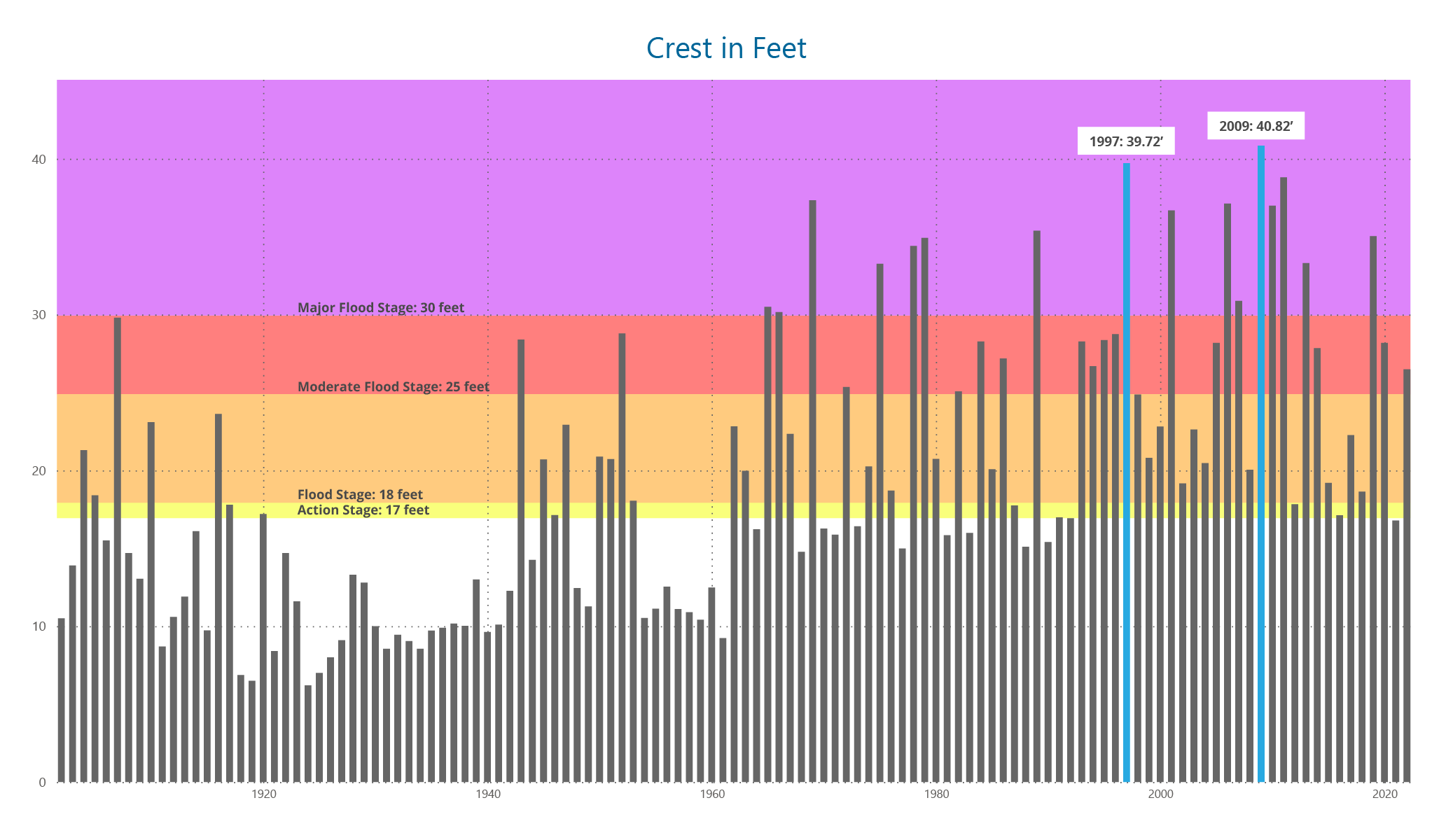February 8, 2024
Ahead of the Storm: NCA Report Shows Red River Valley on Track to Weather the Future
By Joel Paulsen, Executive Director
The U.S. Government recently published The Fifth National Climate Assessment. The congressionally mandated report relies on scientific evidence and delves into “climate change impacts, risks, and responses.”
If you regularly consume news, you won’t be surprised to hear that there are some pretty dire predictions detailed in the report – and it’s not all about temperature increases. The risks of “extreme events” – including storms, droughts and wildfires – continue to increase.
MIDWEST ASSESSMENT
Here in the Midwest, scientists predict “sub-annual changes” that include “rapid oscillations between extreme wet and dry periods [that will] increase the complexity and uncertainty of future impacts.” They anticipate annual precipitation won’t just continue to rise, but it will be concentrated, resulting in major flooding events.
That’s not a surprise here. If you look at the flood levels through the Fargo, North Dakota, and Moorhead, Minnesota, area over the past 125 years, you can see that flooding events have already become more extreme and more frequent.

Click to expand image
The Red River exceeded flood stage in Fargo-Moorhead 61 times in the past 120 years. In the past 30 years alone, we have flooded every year with the exception of 2012, 2016 and 2021.
This all costs time and money to manage. Fighting the record 2009 flood took the entire community chipping in to fill 7.3 million sandbags to be used for temporary dikes. It cost $8.2 million that year alone. If we had not won that fight – and those who were here will recall that it was an incredibly close win – the costs would have been exponentially worse.
Grand Forks experienced $3.5 billion in damages during the 1997 flood. When adjusted for inflation, that’s more than $6.4 billion for one flood event. The dollar signs, however, leave out the emotional harm of losing one’s home or business.
READY FOR WHAT COMES
In the midst of this doom and gloom, however, there’s a big bright spot. When the FM Area Diversion project is ready to operate in 2027, we will be among the most resilient communities in the Midwest.
Here’s why:
- The NAC recommends “upgrading stormwater infrastructure to account for heavier rainfall.” That, of course, is what the FM Area Diversion project is focused on.
- Another key action they cited is “implementing nature-based solutions,” such as restoring wetlands. We have these solutions, as well as plans for planting more native grasses and trees, built in throughout many areas of the project. We have already completed two wetland restoration projects as part of the project work. Near Oxbow, North Dakota, we restored 10.6 wetland acres with 8.2 acres of 50-foot upland buffers. We also planted 63.1 acres of seedlings there. At Drain 27, we restored 320 acres of wetland and planted 485 acres of native plants.
- The report suggests “assessing climate risks to roads,” as well. The U.S. Army Corps of Engineers and their contractor, Industrial Builders Inc., worked over the past couple of years to raise a 4.2-mile stretch of I-29 out of the 500-year floodplain. Road raises also are built into other portions of the project, including city streets and county roads.
LEADING THE WAY
Beyond this, the report shares suggestions to make these actions more affordable and available sooner. It encourages the use of “new funding models like … public-private partnerships.” We’re proud to be the first public-private partnership ever done in conjunction with the U.S. Army Corps of Engineers and the first P3 water management project to be implemented in North America. This funding model not only lessens risk, but it will result in permanent flood protection being implemented a decade sooner and for millions of dollars less than with traditional design-bid-build construction projects. As such, we’re seeing interest across the continent regarding how to replicate this success.
Without the foresight by numerous leaders throughout our region and the hard work by our many partners in implementing this solution, we would not be as well positioned to manage what’s to come. I think this report further illustrates that we are doing the right things for the benefit of our entire region.
